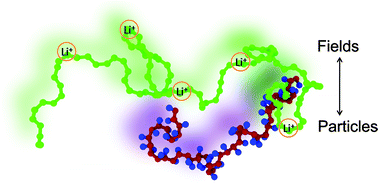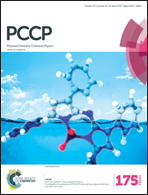Hybrid particle–field molecular dynamics simulation for polyelectrolyte systems†
Abstract
To achieve simulations on large spatial and temporal scales with high molecular chemical specificity, a hybrid particle–field method was proposed recently. This method is developed by combining molecular dynamics and self-consistent field theory (MD-SCF). The MD-SCF method has been validated by successfully predicting the experimentally observable properties of several systems. Here we propose an efficient scheme for the inclusion of electrostatic interactions in the MD-SCF framework. In this scheme, charged molecules are interacting with the external fields that are self-consistently determined from the charge densities. This method is validated by comparing the structural properties of polyelectrolytes in solution obtained from the MD-SCF and particle-based simulations. Moreover, taking PMMA-b-PEO and LiCF3SO3 as examples, the enhancement of immiscibility between the ion-dissolving block and the inert block by doping lithium salts into the copolymer is examined by using the MD-SCF method. By employing GPU-acceleration, the high performance of the MD-SCF method with explicit treatment of electrostatics facilitates the simulation study of many problems involving polyelectrolytes.


 Please wait while we load your content...
Please wait while we load your content...